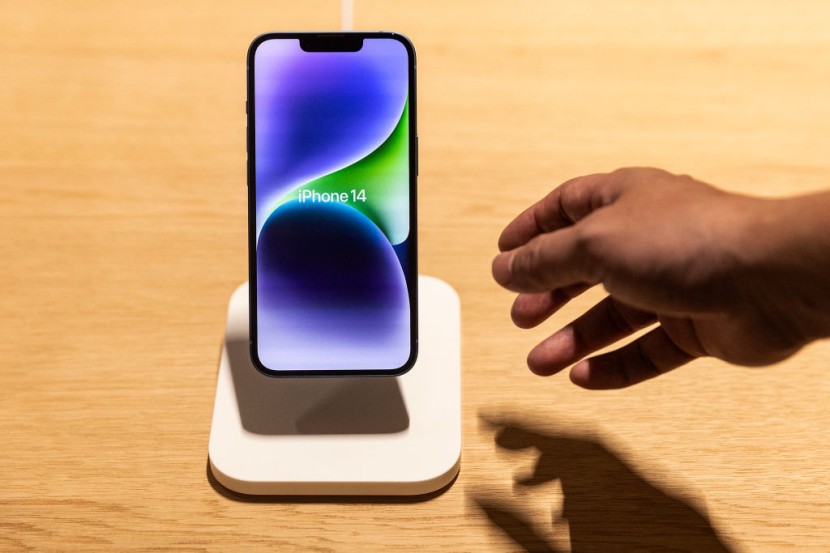
A woman named Juana Reyes was rescued after suffering from a broken ankle while hiking with her friends in a remote part of Trail Canyon Falls in the Angeles National Forest in Tujunga, California, Sunday (June 25).
Reyes recalled a part of the trail collapsed underneath her, breaking her leg and injuring her ankle.
She was able to call for help despite not having cell phone service due to iPhone 14's Emergency SOS via Satellite feature. "We tried to get a hold of 911 but there was no service on our phones," she told ABC Los Angeles.
RESCUE! Her iPhone 14 notified us via the satellite 911 feature. Ankle injury in Trail Cyn, wasn’t able to hike out. LACO Fire did a hoist. @LASDHQ @LACoSheriffLuna @MontroseSAR @CVLASD @CbsLos @NBCLA @KTLAnewsdesk @ABC7 @FOXLA @LACoFireAirOps @LACOFD pic.twitter.com/WlfXiYgp4C
— Mike Leum (@Resqman) June 24, 2023
Thanks to the iPhone 14's emergency technology, Reyes was located by a helicopter and taken to the hospital for treatment. She is now recovering at home.
The Los Angeles County Sheriff's Department (LASD) said Reyes was their third "iPhone rescue" of the year.
It was also the iPhone 14's emergency feature that saved the lives of two people after getting involved in a crash last year in another part of the Angeles National Forest.
What is Emergency SOS Via Satellite?
Emergency SOS via Satellite is a feature in the Apple iPhone 14 where users can ask for help if they need it.
According to Apple, the feature could help users connect with emergency services under exceptional circumstances when no other means of reaching emergency services are available. This means users can text emergency services even if they are outside cell or WiFi coverage by simply pointing their device to an available satellite in the area.
Depending on the user's location, an emergency message might take 15 seconds to a minute. However, connection times could also be impacted by the user's surroundings, the length of the message, and the status and availability of the satellite network.
In case the user becomes unresponsive due to a severe crash or a hard fall, iPhone or Apple Watch could detect the incident and send an automatic crash detection or fall detection notification to emergency services.
Emergency SOS via Satellite is free for two years upon activation of iPhone 14 or iPhone 14 Pro.
How to Use Emergency SOS Via Satellite?
Apple advises users to prepare their devices ahead of time in the event they venture into areas where there is no cellular or WiFi coverage by trying the Emergency SOS via Satellite demo.
Users have to be outside to simulate a situation, preferably on open terrain with a clear view of the sky and no trees on the way. Alternatively, they can climb a hill if they have an elevated area nearby.
They have to turn on Satellite Connection on Location Services if they have not yet done so before the demonstration. Then, they open the Settings app, tap "Emergency SOS," and under Emergency SOS via Satellite, tap "Try Demo" and follow the onscreen instructions.
Users could also share their Medical ID from the Health app and notify their emergency contacts when they use Emergency SOS via Satellite. This needs to be set up prior to an emergency.
They can also use the Find My app to share their location via satellite.
In the event of a real emergency, users are advised to try calling their local emergency number first to reach emergency services, such as 911 for the US.
If a call would not connect, users can attempt to text emergency services via satellite by tapping "Emergency Text via Satellite." Alternatively, they can go to Messages to text the local emergency number, then tap Emergency Services.
Afterward, users should tap Report Emergency and answer the emergency questions to best describe their situation. They then choose to notify their emergency contacts that they contacted emergency services, along with their location and nature of the emergency.
In both the demo and real-life situations, users need to connect to a satellite by following the onscreen instructions and turning to where the satellite is positioned to stay connected while sending their emergency message.
Once connected, the iPhone starts a text conversation with emergency responders by sharing critical information, including the user's Medical ID, emergency contact information, location, and remaining battery of the user's iPhone.
There are certain local emergency numbers that require iOS 16.4 or later to connect to emergency services via satellite.
All messages sent using Emergency SOS via Satellite are sent in encrypted form and decrypted by Apple to be passed along to the relevant emergency services in the area.
In Which Countries Is Emergency SOS via Satellite Available?
To use Emergency SOS via Satellite, users need to have an iPhone 14 or iPhone 14 Pro with iOS 16.1 or later in the US or Canada; iOS 16.2 or later in France, Germany, Ireland, and the UK; and iOS 16.4 or later in Australia, Austria, Belgium, Italy, Luxembourg, the Netherlands, New Zealand, and Portugal. The feature can also be accessed in all the mentioned countries.
International travelers who visit a country or region where the feature is available could use it while visiting unless the device was bought in mainland China, Hong Kong, or Macau. Emergency SOS via Satellite is not offered on iPhone models purchased in the mentioned areas.
In addition, satellite connections might not work in places above 62° latitude, such as northern parts of Canada and Alaska.
Currently, messages in Latin characters, such as English or European French, are supported in messages sent using Emergency SOS via Satellite. The service also supports American Spanish, Canadian French, Dutch, German, Italian, and Portuguese.
The regions were likely dictated by the agreement Apple had with satellite provider Globalstar, Pocket-lint reported.
Further details can be found on the Apple website here.
Related Article: Apple to Upgrade Retail Employees' iPhone XS to iPhone 14
© 2025 HNGN, All rights reserved. Do not reproduce without permission.








